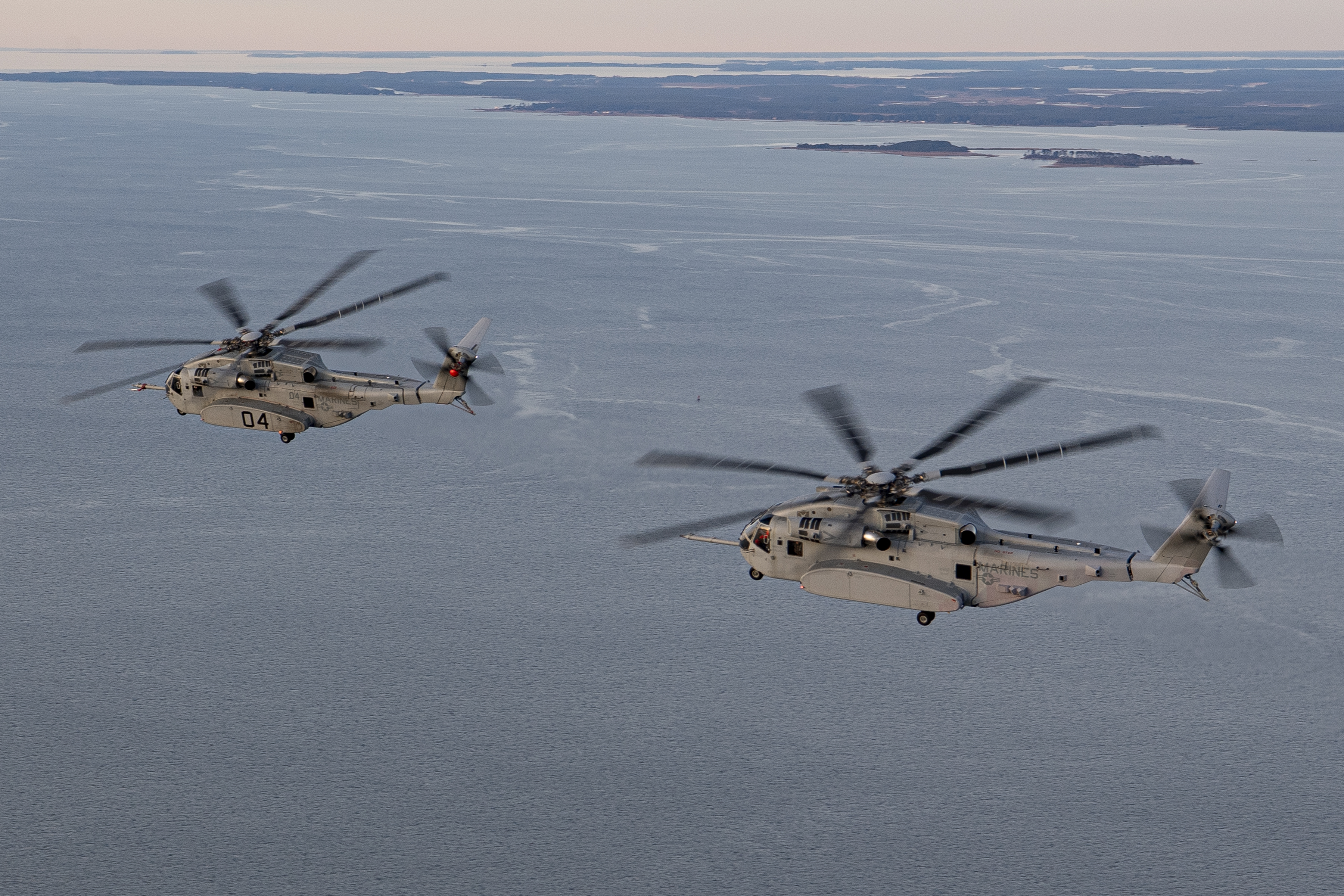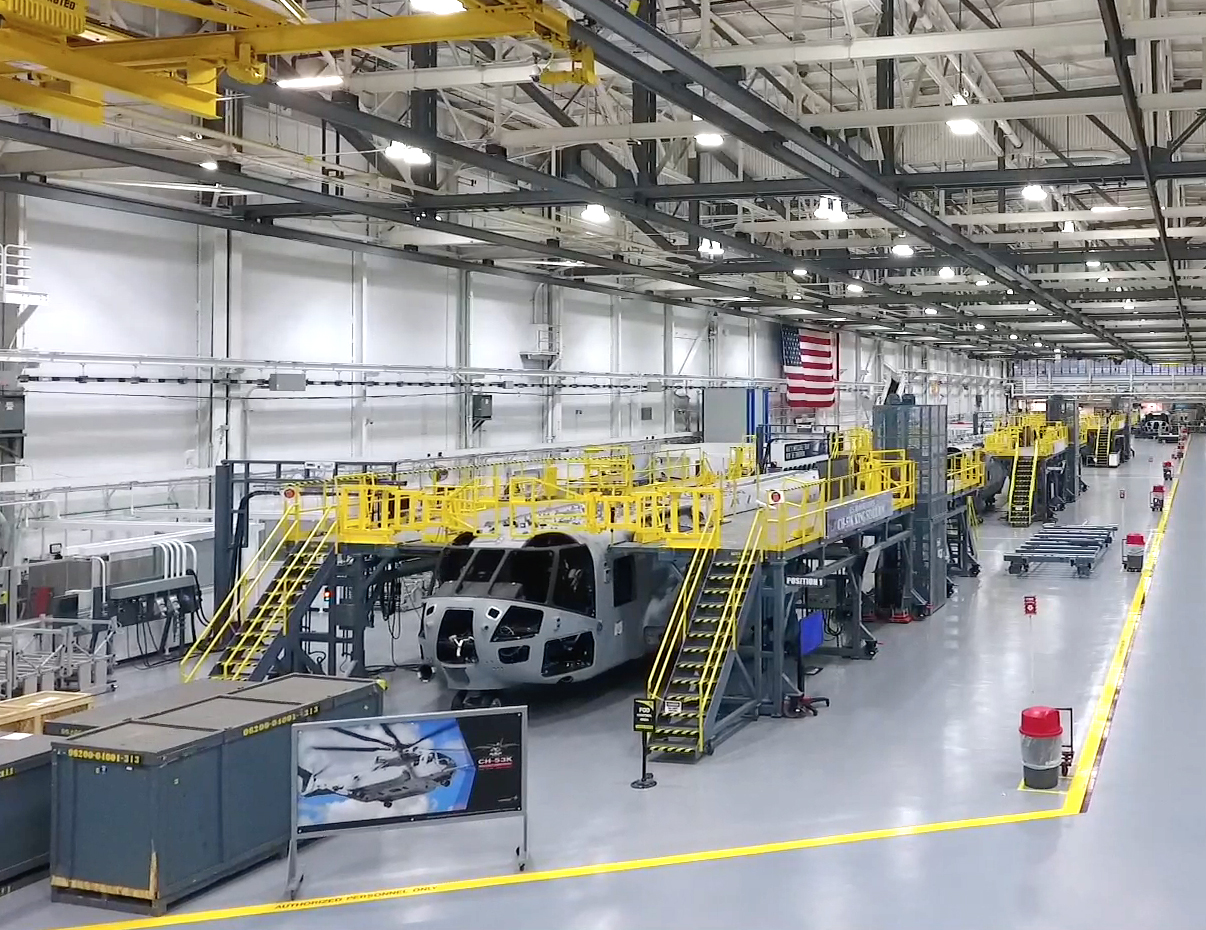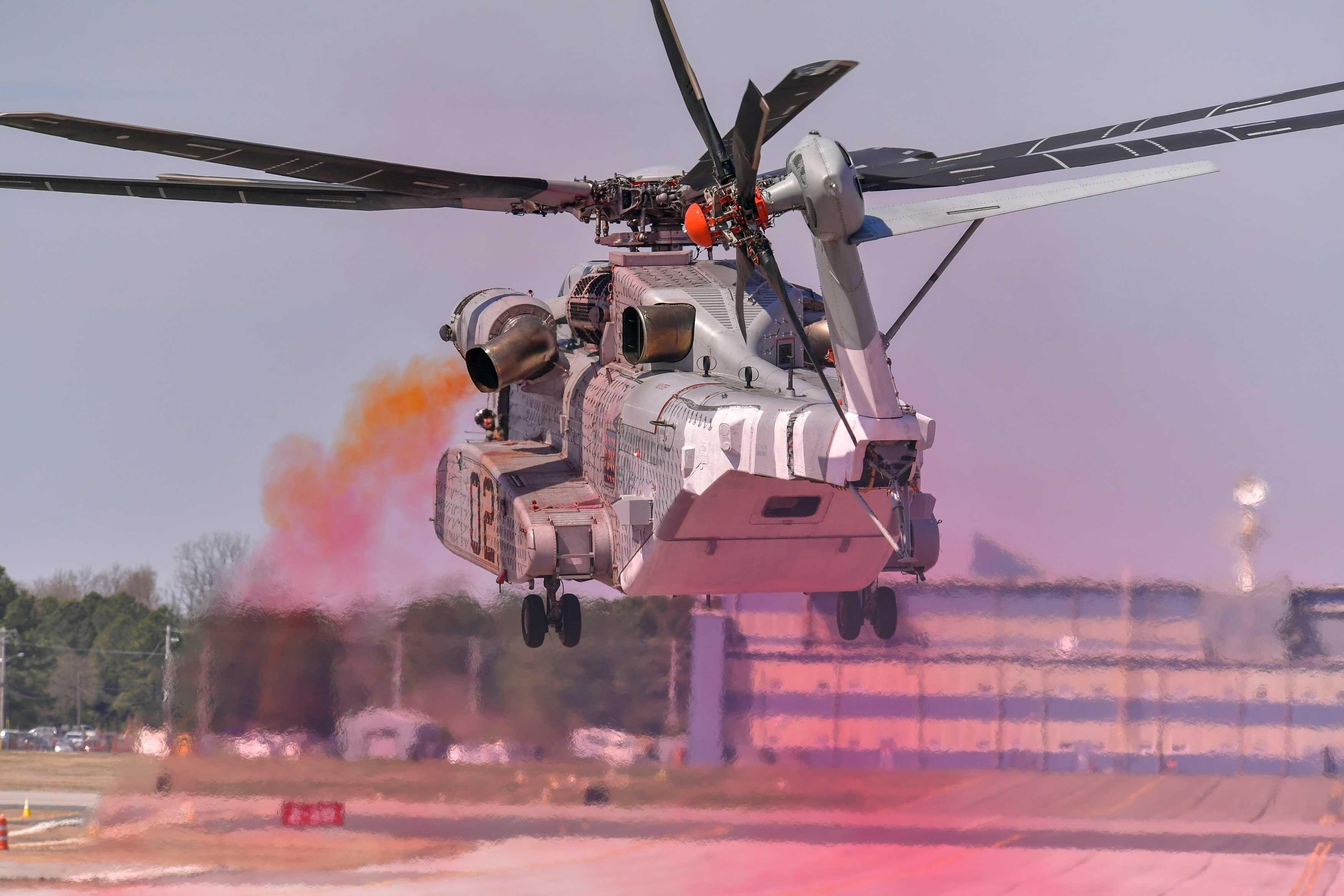
CAPITOL HILL – Marine Corps leaders are looking forward to ramping up CH-53K heavy-lift helicopter production after military and industry leaders agree the program’s technical challenges are behind them.
During last year’s budget season hearings on the Hill, the focus of conversation around the 53K was a list of 126 deficiencies that had been identified, including the most talked-about issue of exhaust gas reingestion (EGR), where the helo’s three engines were sucking in hot and dirty air instead of fresh air.
This week, during the annual House Armed Services Committee hearing to discuss aviation programs and budget requests, Deputy Commandant of the Marine Corps for Aviation Lt. Gen. Steven Rudder was focused on how quickly the Marine Corps and Sikorsky team could ramp up production to bring costs down. He noted that the Marines only asked for seven aircraft in the Fiscal Year 2021 request because when the budget was being written the EGR issue hadn’t been solved yet; as of December, a solution was proved and agreed to, and Rudder says he’s ready to buy more aircraft in the out years – 11 a year is the current rate on paper, but he said the Marines want to go even higher.
“The higher the numbers, the greater the learning curve from production,” Rudder told the HASC tactical air and land forces subcommittee.
“As we saw with F-35, as we ramp production, the cost curve comes down.”

Rudder told reporters after the hearing that they also learned from the F-35 Joint Strike Fighter program that concurrency in fixing technical issues and delivering planes to the fleet was not a good idea, and he noted the EGR solution and the others would be incorporated in the production line starting with Lot 2 helicopters – meaning that all but two Lot 1 production helicopters will be built with the fixes in place. Sikorsky told USNI News the Lot 1 aircraft would have the fixes inserted in before they were delivered to Marine Corps squadrons.
Rudder had only good things to say about the ongoing testing program, telling lawmakers that “we’ve got 1,700 hours on the airframe itself. By this fall we’ll have our first operational airplane flying in New River (Marine Corps Air Station in North Carolina), and by next year we’ll have our first four operational airplanes flying in New River. And we’ve got our first lot on contract. So right now it is on track and doing very well. We’ve got to thank the acquisition community for putting it on track.”
Assistant Secretary of the Navy for Research, Development and Acquisition James Geurts put the CH-53K program through a restructure effort, after the 126 deficiencies were identified, progress fixing the EGR issue stalled, and the flight test program was behind due to flying a lot but not necessarily checking off a lot of test requirements and data points in any given flight event. A new path for the program was laid out, including clear testing objectives and timelines for fixing the technical deficiencies.
Both the government and industry are pleased with how that restructure went.
“As you’ve seen me do with other programs, I want to make sure we’re balancing capability to the fleet as well as risk. And so we slowed the production buy a little bit on the front end, reset the program last year to make sure we had our arms around the technical risk and we were buying the helicopter we wanted, which again we’ve really seen good progress since then solving all the technical issues,” Geurts told reporters after the HASC hearing with Rudder.
“As those technical issues have now been solved, I forecast that we will now continue to look at ramping up the production of those airplanes to drive the cost down. We’ll have to work that into the budget amongst a bunch of competing priorities, but no longer is it a question of does the helicopter work and is it the helicopter we want to buy; now it’s going to be, how efficiently can we stand up that production line and get at rate so we can drive cost down.”
Geurts said at a Senate Armed Services Committee hearing the week beforehand that he was using a similar tactic with other programs, including the Ship-to-Shore Connector, where he was uncomfortable with the technical risk in the program.
“We have been working with the contractor, we had had some delays in developmental testing, we’ve worked our way through most of those and feel pretty comfortable now with the vehicle itself,” he said of the Textron-made surface connector for which he said he spent time working closely with the program team to make reality-based decisions that shared risk and reward between the Navy and Textron.
“I’m not going to continue producing something that’s not ready to produce. We made some hard decisions in this budget in [the MQ-4C Triton unmanned aerial vehicle], in a couple other programs where we were not where we needed to be,” Geurts continued at the SASC hearing.
“What I don’t want to do is double down on the risk and create more concurrency; I would rather, as we did with 53K, stop, get the program on the right footing, and then execute smartly on that program.”
Bill Falk, Sikorsky’s CH-53K program director, told USNI News this week that he was fully supportive of the reset effort and would recommend that process for other programs as needed.
“I think what it allowed us to do is kind of take a step back and assess the program in terms of our historical performance, what we had been able to achieve, and plan ourselves going forward – so the amount of time it’s going to take, the amount of funding that will be required – it was all not based on future optimistic projections, it was based on demonstrated performance. And it seems obvious that that would make sense to do, but we don’t often plan a program that way as we look forward,” Falk said.
“So I think that reset that Secretary Geurts was speaking of is … a very welcome and refreshing approach because it’s enabled us to build a plan that we’re actually completely executing to and actually doing a little bit better than. So I think it sets the expectation, it gives us an opportunity to meet the expectations with eyes wide open, knowing exactly what we have in front of us and what we need to do.”

Falk said that, since December’s demonstration of the EGR solution, “we put all that skepticism to bed, and now there’s no more conversation about EGR, we got it.” The Sikorsky team is mostly done addressing the other 125 deficiencies.
For example, one of the challenges was that, during aerial refueling, the wake from the wing of the C-130J tanker affected the air data probes on the helicopter. Falk said those sensors have been moved and a software update has been written, and that solution is set for testing during an aerial refueling demonstration at Naval Air Station Patuxent River, Md., within the next two weeks.
“That will be the final validation where we actually do a full aerial refueling demonstration including capturing the basket, and at that point we will have concluded that testing and we anticipate that, (based on) all the data we have collected to date, we’ll be successful there. So that will put to bed another one of those issues,” he said.
Falk added that he was pleased to see the conversations in the Pentagon, in the program offices at Naval Air Systems Command, and with lawmakers on the Hill is “not around technical issue resolution; everybody, based on what we did last year, seems to have confidence there. So that’s a good thing.”
By the end of this year, Falk said, Sikorsky will have finished its flight test program. That includes the upcoming aerial refueling demonstration, an initial shipboard testing event on a Navy amphibious ship planned for June, and hot weather and degraded visual environment testing at Marine Corps Air Station Yuma, Ariz., in the late summer. Falk said none of the tests are new, exactly – some of them are done to ensure the EGR solution works at the very edges of the operating envelop, some are being done to collect data points that were missed in early testing, and the shipboard testing will validate testing that’s already been done extensively on land – ensuring the tail and wings fold sufficiently to fit into a ship’s hangar, and ensuring that high-energy emitters on a ship, such as the radar, don’t interfere with the helicopter’s operations.
With the testing complete by the end of the year, the program will have the chance to sift through all the data and send up its report to Marine Corps leadership ahead of the planned start of initial operational test and evaluation in May 2021, ahead of a late 2023 or early 2024 first deployment.





